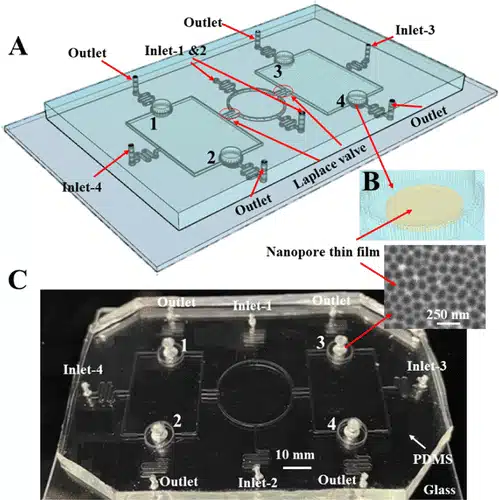Researchers at Texas A&M AgriLife and Iowa State University have developed a highly sensitive sensor chip for detecting disease pathogens, surpassing current methods by tenfold.

Technological advancements have revolutionised the healthcare field in recent years, leading to groundbreaking discoveries and innovative solutions. Imagine a tiny, sophisticated device embedded within our bodies or integrated into medical devices that can precisely analyse biological data. This futuristic technology can transform how we approach healthcare, enabling early detection, rapid diagnosis, and targeted treatment of various diseases.
Texas A&M AgriLife Research scientists and collaborators at Iowa State University have developed a sensor chip that can detect many disease pathogens, level ten times greater than existing detection methods. In addition, the chip eliminates the need for chemical dye reagents, providing fast and affordable point-of-care diagnostics for plants, food, animals, and humans. It can detect various pathogens, including foodborne pathogens, bird flu, and COVID-19. The researchers used the new sensor to detect Phytophthora infestans, a pathogen responsible for the highly destructive late blight disease.
Building on existing technologies
The new sensor enhances loop-mediated isothermal amplification (LAMP), a widely employed technique for pathogen detection that amplifies their Deoxyribonucleic Acid (DNA). LAMP product detection typically relies on fluorescence dye labelling, an expensive and less sensitive process. The new sensor detects pathogens without reagents, with high sensitivity, and eliminates the need for time-consuming DNA purification, facilitating point-of-care usage. The chip contains a nanopore thin-film sensor in a reaction chamber. Immobilised primers on the nanofilm bind amplified LAMP products, generating measurable signals via a portable spectrometer.
What’s next
The LAMP chip presents a novel, compact framework for pathogen detection through label-free sensors that exhibit remarkable sensitivity. The research team will now work on augmenting the sensitivity to a subattomolar level or potentially even surpassing it. The team aims to overcome obstacles in identifying and differentiating pathogen species and strains with high sequence similarities. They will also work to enhance the specificity of detections and achieve quantitative detection by integrating artificial intelligence and Clustered Regularly Interspaced Short Palindromic Repeats (CRISPR) gene-editing technologies. The aim is to develop a suitable product that can be widely adopted in point-of-care applications for plant, animal, and human health.
Reference: Materials provided above by Texas A&M AgriLife Communications.






